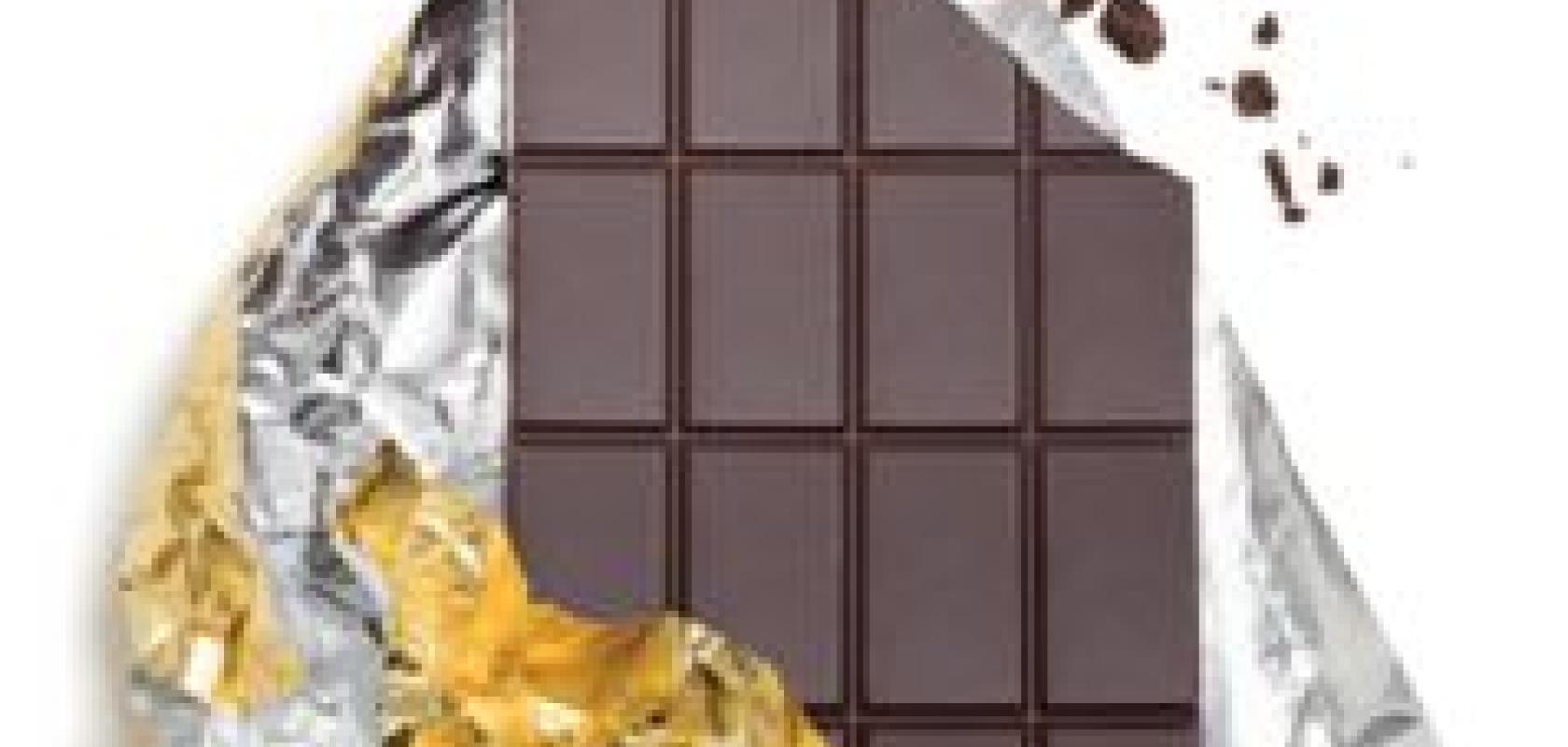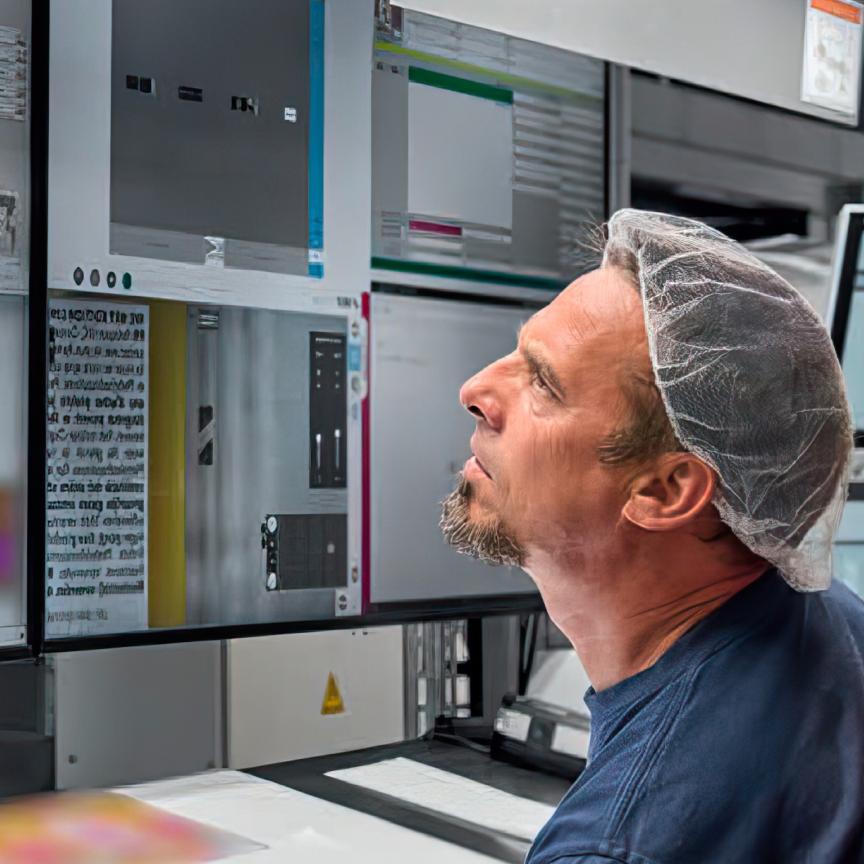Look around any supermarket and the myriad of colours and materials used in packaging represent the challenge of monitoring the mass production of products we consume every day.
‘There are lots of different uses of vision in packaging – from the labels, to the seals for food packaging, for example,’ Chris Pitt, sales manager at Stemmer Imaging, says. While the food processing industries may use complex machines, the weak point is still the human being. As Pitt explains: ‘The simplest imaging application is for labels, checking they are in the right position and the right way up, and the next stage up from that is the data on the label – making sure the label says what it should. There could be a problem with people typing the data into the label machine. Maybe the label should say "apples from England" and someone spells the word "England" wrong.’
According to Pitt, this can happen regularly. His company’s vision systems will read the text and check with the customer’s main database to verify that the text input is correct, and that all the words are spelt correctly. ‘The system is using optical character recognition together with verification techniques,’ he adds, ‘so it effectively knows when a word such as England is spelt incorrectly.’
Beyond human error there can also be machine error, such as putting the wrong lids onto the wrong jars or pots. Perhaps the wrong lids were loaded by an employee, or maybe it’s a computer glitch; either way, Pitt’s products need to tell the difference between the right and wrong lid. ‘Maybe you’re making products with different lids, such as yogurts. Some yogurts have nuts, so they mustn’t have the lid for strawberry yogurt – so the vision system will verify that the correct lid is on the correct pot.’
This sort of imaging on packaging lines can be much wider in scope; examining the packaging generally, rather than just focusing on data on the exterior. Another example Pitt gives is in the meat industry. ‘Checking logos on packaging is also important. If the product is British farmed meat it mustn’t have a logo that says it comes from Finland, for example. So we need to be able to verify that the actual product is in the right packaging.’
Imaging systems can also examine the integrity of packaging seals. Many products, such as bacon, are supplied in a plastic container with a heat sealed strip, which people will pull off to open the packet. However, as Pitt points out: ‘Bits of food can get caught underneath the seal and that is not desirable; not only because people won’t pick a pack that looks wrong – but also because the seal could be faulty, leading to health issues.’
In food production, where hygiene regulations have to be adhered to – such as in the case of ensuring food stuffs are not caught between packaging seals – imaging systems have to be designed to be compatible with the environment. ‘IP67 and 65 means it [the system] is protected against water, which may be used in the production environment for hygiene purposes,’ explains Bettina Ronit Hoermann, IDS Imaging Development Systems’ media communications manager.
Cameras housed in IP67 and 65 enclosures can still be high-resolution. IDS provide five-megapixel cameras for reading the barcode matrix on packaging, whereby the codes can be damaged by the production process.
One application for IDS’ technology is optical character recognition on bottle labels that have been washed after use. Returned bottles for recycling need high-resolution imaging, says Hoermann.
‘They need higher resolution in regards to the crinkled packaging,’ she says, explaining that the labels can become wrinkled after cleaning. ‘The bottles are given back and cleaned and reused, and that is almost always a problem they [the manufacturer] are facing: crinkled packaging.’ In addition to the high-resolution images, IDS also offers an upgrade option for reading the data using a range of algorithms to evaluate the images taken by the camera.
A novel application is for checking Braille information on packaging. As Stemmer’s Pitt explains, Braille is not easy to read for a computer: ‘Braille is something we’re doing a lot of work on with 3D cameras, to determine that the Braille is punched in correctly. It is not a simple character set you can image easily. It is a very challenging imaging application. We’ve done a feasibility study for it, but we haven’t done a system for that yet – although I can see it happening in the future.’
Another application of 3D imaging is height detection that can identify if a product’s lid is correctly fitted to a box or pot. ‘3D imaging is a newish technology that allows you to measure the profile of an object so you can determine how high something is, such as the lid,’ explains Pitt. ‘If the lid is not put on properly, the profile of the top will show a high region, which will allow that package to be rejected.’
This can also aid in monitoring robotic pick-and-place operations. Pitt gives an example of a well-known brand of chocolate sold in a tin. ‘The tins are stacked by robots for packaging and they pick them up by the lids. Sometimes the lid comes apart from the box, but the robot doesn’t know it is just holding a lid and not the complete box, so by checking the height profile of the stacked tins we can check if a box is missing, and so verify if the chocolates are still there,’ says Pitt.
Whether it’s checking that lids are in place, Braille is punched accurately, or whether England is spelt correctly, each job has to have the right camera and users have the option of area scan or line scan cameras. Area scan will grab a shot of a single area and analyse the image, while line scan is like a photocopier: it scans line by line. ‘The advantage is that you can image something moving along and you can keep taking images, so that is good for checking the printing on packaging,’ explains Pitt.
One major challenge in packaging applications is overcoming problems with shadows or reflections that can affect the quality of the images used for analysis. Choosing the correct illumination is therefore very important. With the correct light, users can highlight different features of an object in different ways. If a user is looking at the edges of packaging, a low angle light can be used to shine light from the side and up to the camera.
‘This will show defects,’ explains Pitt, ‘but you may need to illuminate from the top to show other features. If you flood the light from the top without filters on the lenses you’ll get massive reflections in the image, so something like a polarising filter may well be needed.’
Pitt also warned that users would want filters if they are using red light illumination in order to allow the wavelength of light through, but remove the shading, sunlight and reflections.
Another option is cloudy-day illumination or continuous diffuse illumination. This is used for very shiny objects such as crisp packets that have a metallised foil packaging. The continuous diffuse light technology, according to Pitt, ‘looks like an upside-down bucket with lights around the outside pointing up into it reflecting back down, and a hole in the top for the camera with another light that reflects back down to give diffuse light from all directions, eliminating shadows and reflections.’
Whatever the future of packaging is, there are a range of technologies that can be applied – and improvements in resolution and data processing will ensure that, whether it is lids that are ajar or labels with spelling mistakes, the vision systems will detect the problem as the product whizzes down the production line.


